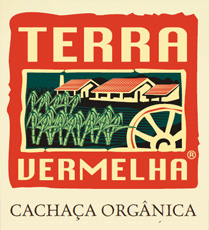Cachaça, sugar cane brandy, the most popular drink in Brazil, is defined by the Brazilian legislation as the alcoholic product obtained from the distillation of the fermented juices of the sugar cane with an alcohol content between 38º e 54º GL. Its history goes back to the begining of the 16th Century, as being the first Brazilian distilled beverage.
Begining in 1584 the slave labor was essential for the development of the sugar cane industry and responsible for the increase of the production of cachaça, since all copper stills and distilleries were located inside the large sugar mills. At first, the cachaça was the foam of the boiled juices of the sugar cane during the purification of these juices over low heat and was used as animal feed. For some time it was considered a secondary product of the sugar industry. It was a juice and had no alcoholic content. Only after the second half of the 16th Century did the cachaça begin to be produced in clay stills and then afterwards in copper stills, under the name “firewater”.
The improvement of the production methods attracted many consumers and the cachaça began having an economic importance to the colony of Brazil. It became a threat to the commercial interests of the Portuguese, because the consumption of the ‘bagaceira’(traditional Portuguese brandy made of grapes) decreased.
By the time the Portuguese royal family came to Rio de Janeiro in 1808, the cachaça was already considered one of the main Brazilian economic products. In 1819 the cachaça was the Brazilian drink of choice. It has since become the traditional Brazilian drink, that because of the love for their country, refused wine, especially Portuguese wine, and prefered to toast with cachaça.
The cachaça is the second most consumed alcoholic beverage in Brazil. The receptivity in the international market has been great due to its charm as a typical Brazilian drink. The product is present in the best bars, pubs and night clubs in London, Paris, Berlin, New york and other hot spots around the world. Research institutes and behavior magazines in the USA see cachaça and caipirinha as drinks in ascension. In Germany, the caipirinha is already one of the most ordered drinks in the best bars and night clubs.

